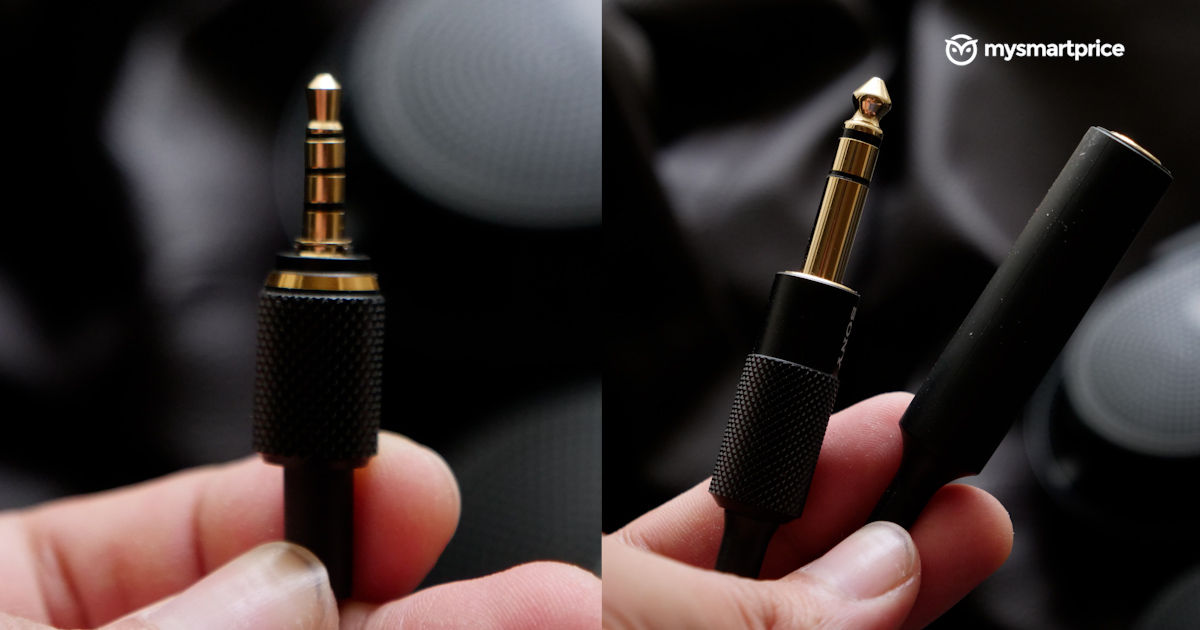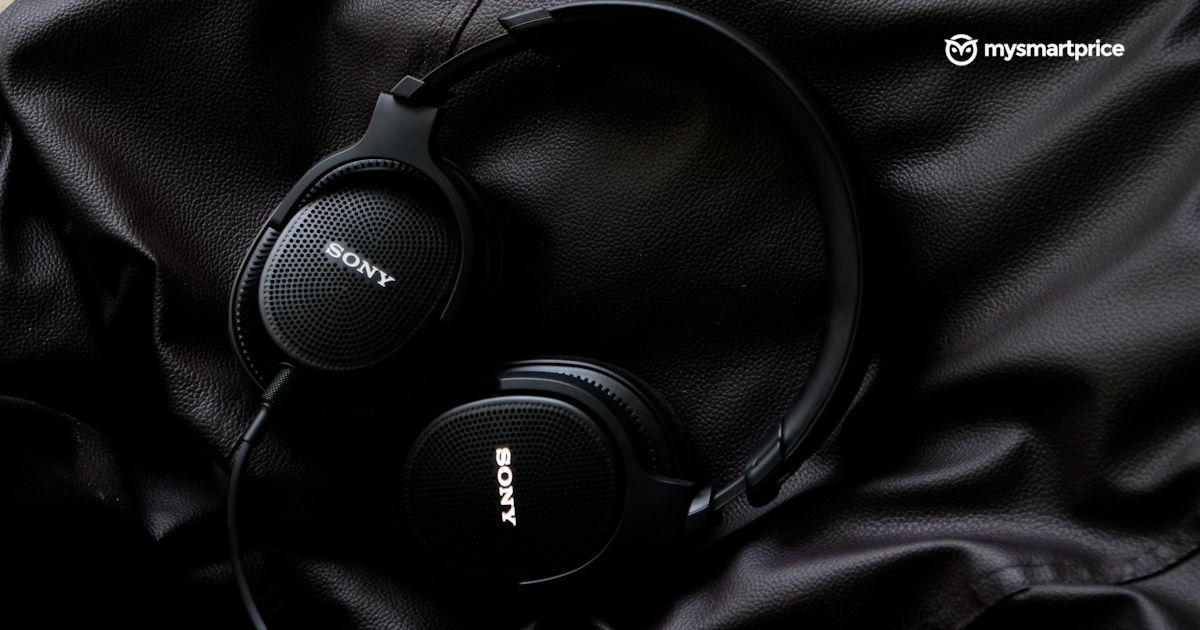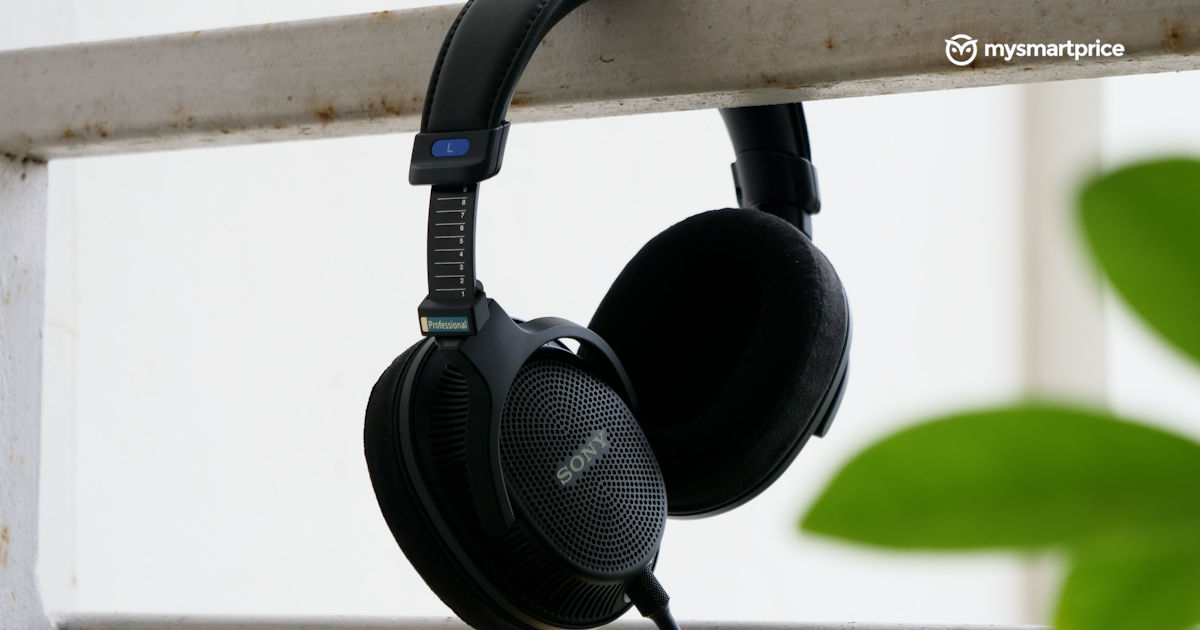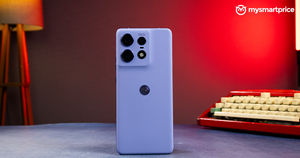
In this era of TWS buds, where music is more personal than ever, over-the-ear headphones have become a niche commodity. An even more rare category of headphones are open-back studio monitors, which are reserved mainly for music producers, video editors and music enthusiasts. Priced just shy of 40 grand, Sony’s spanking-new MDR-MV1 studio monitors raise the eyebrows of an average listener not just with their price, but also their wired nature and lack of high-tech features such as ANC. Turns out, for sheer auditory excellence, analogue is good enough. Read our review to find out more.
Sony MDR-MV1 Monitor Headphones
Rs 39,999What Is Good?
- Comfortable for long listening sessions
- Balanced, flat sound
- Wide soundstage
- Low impedance makes them suitable for plug-and-play use
What Is Bad?
- Expensive
- Plastic-only build
Sony MDR-MV1 Monitor Headphones Review: Design and build
 The Sony MDR-MV1s are a unique pair of headphones because of their open-back nature, meaning they purposely ‘leak’ the sound they produce. They have numerous tiny holes and grilles that help in producing a larger soundstage and less reverb than a typical pair of closed-back headphones, two things that are extremely crucial when you’re producing music or mixing the soundtrack of a video, where there’s almost no margin for acoustical errors and you need utmost control of the soundstage.
The Sony MDR-MV1s are a unique pair of headphones because of their open-back nature, meaning they purposely ‘leak’ the sound they produce. They have numerous tiny holes and grilles that help in producing a larger soundstage and less reverb than a typical pair of closed-back headphones, two things that are extremely crucial when you’re producing music or mixing the soundtrack of a video, where there’s almost no margin for acoustical errors and you need utmost control of the soundstage.
This also means the people around you can hear you and, worse, you can hear what’s happening around you. This is the reason why these headphones belong inside soundproof rooms with rolling chairs.
The latter is the reason why these headphones come with a unique cord as well – the 3.5mm head that connects to the headphones is supposed to be screwed on. This reduces the chances of oopsie-daisie moments of snagging in the event of a chair rolling over the cable. The other end of the cable comes with a quarter-inch connector for plugging into consoles, mixers and interfaces. You also get a 3.5mm adapter in the box for connecting into a conventional mic port on your laptop.
Because these headphones are meant to be worn for extended periods, every single contact point, be it the headband or the ear pads, are generously padded with plush memory foam. Sony’s attention to detail is also immaculate – each height adjustment notch is numbered, so you know exactly how you wore your headphones in case you share these with another individual.
Sony MDR-MV1 Monitor Headphones Review: Hardware and audio quality
|
Driver Size |
40mm |
|
Driver Type |
Dynamic, Open Back |
|
Frequency Response |
5Hz – 80KHz |
|
Impedance |
24 ohms |
|
Sensitivity |
100dB |
If you’ve never tried reference-type headphones, you’d be surprised by how flat the sound profile of the Sony MDR-MV1 is. There’s no overly thumpy bass here, but the trebles are slightly on the shinier side. The mids are spot-on though, with ample headroom to accommodate other frequencies without making vocals or guitar solos sound stuffy.
 Because of the open-back design, the soundstage, or an imaginary three-dimensional audio space, is really wide.
Because of the open-back design, the soundstage, or an imaginary three-dimensional audio space, is really wide.
The 24 ohm impedance means you can easily connect it directly to a battery powered device, such as a laptop, without requiring an amp.
All these are paramount to a professional music producer, because any kind of preference towards a frequency would end up interfering with the end result. The reverse is also true, if you have the right set of audio paraphernalia to go with these, you can listen to music the way it was intended to be heard.
In our particular case, we edited full-length YouTube videos and referenced a couple of electric guitar recordings using a TASCAM 2×2 audio interface. We also listened to music, ranging from western classical tracks to Hindi hip-hop songs.
Video editing was a breeze, because we could notice a clear distinction between vocal and stock music tracks, and often we could nail the correct audio levels of a video without looking at the visualiser.
When it comes to spatial audio, we weren’t able to test it out entirely because there’s no platform in India (nugs.net and Amazon Music Unlimited among others) which allows you to stream three-dimensional songs in full glory.
Creators can install Sony’s proprietary 360 WalkMix Creator as a plugin within popular digital audio workstations such as Pro Tools, Ableton Live 11 and Logic Pro. They can then create spatial audio tracks by moving around individual sounds within a virtual 360-degree sound field and then exporting them onto a ‘suitable’ format which supports MPEG-H 3D Audio. We didn’t have the expertise or skill to try this out, sadly.
Sony MDR-MV1 Monitor Headphones: Verdict 
At 40 grand, the MDR-MV1s are catered to a very specific use-case – music and video production and high-end music consumption. An average headphone buyer is going to be bamboozled by the analogue-only connectivity, open-back design and the lack of ANC at this price. For purists, it’s as good as it gets, because it competes directly with the likes of Sennheiser HD 650. Plus, you get to live the future with spatial audio chops.
If we had to nitpick, we’d say it doesn’t have planar magnetic drivers such as the HiFiMan Sundara, that offer much better bass response while requiring a good amplifier, which is an added expense.










